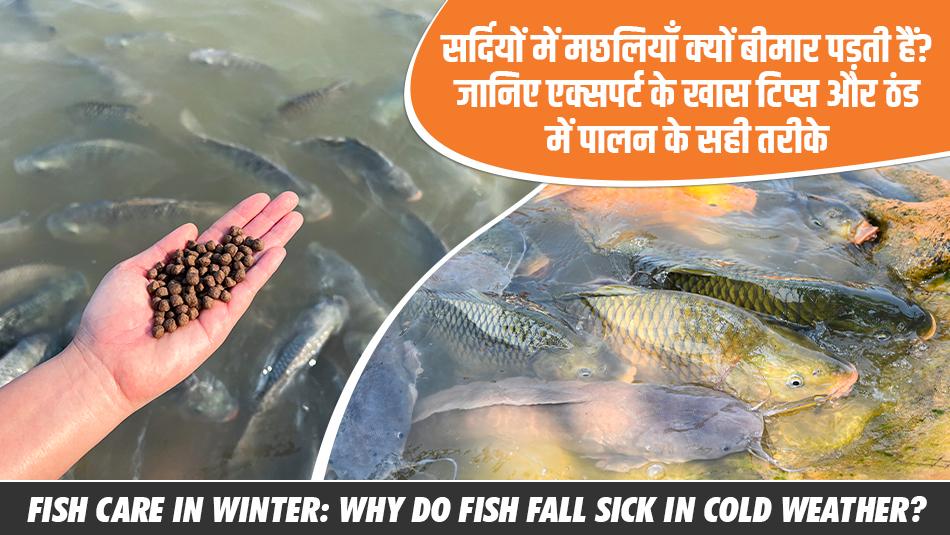
As winter deepens, fish farmers often face new challenges. Low temperatures affect not only the pond water but also the metabolism and immunity of fish, increasing the risk of disease. Without proper care, farmers may experience reduced growth, poor survival rates, and financial loss.
Dr. Meera D. Ansal, Dean at the College of Fisheries, Guru Angad Dev Veterinary and Animal Sciences University (GADVASU), Ludhiana, explains that both water quality and feed management must be adjusted during winter.
According to her, clean water is more crucial than feed for maintaining fish health.
Fish are cold-blooded animals, meaning their body temperature changes with the water temperature. When pond water becomes too cold, fish become sluggish and susceptible to infections. Therefore, regular monitoring of pond temperature is essential during the winter seas
Dr. Ansal recommends maintaining a pond depth of no less than 6 feet during winter.
This allows fish to stay in the warmer lower layers of water.
When the temperature drops below 15°C, farmers can mix slightly warm tube-well water into the pond during the evening hours.
Also, prune surrounding trees to ensure direct sunlight reaches the pond — as fallen leaves can pollute water and reduce oxygen levels.
During winter, shorter days and weaker sunlight lower the oxygen level in ponds, especially under cloudy conditions.
To prevent this, use aerators to maintain oxygen circulation.
Dr. Ansal suggests running the aerator early in the morning for best results.
If the pH level of the water falls below 7.0, apply 100 kg of lime per acre in two parts. This improves water quality and helps keep fish healthy.
As temperatures fall, the appetite of fish decreases. Farmers should gradually reduce feeding by 25% to 75% depending on temperature.
When the water temperature dips below 10°C, stop feeding completely, as fish cannot digest food properly at that stage.
Uneaten feed accumulates at the pond bottom, contaminating water and promoting disease-causing bacteria.
With regular temperature checks, proper oxygen management, timely liming, and balanced feeding, farmers can maintain both fish health and production levels even during the coldest months.
These preventive measures not only reduce the risk of disease but also increase profitability for fish farmers during winter.
Would you like me to add these two highly useful sections to make the article more complete and SEO-rich?
These sections will make your article more practical, engaging, and keyword-optimized for “winter fish farming”, “fish diseases”, and “aquaculture tips”.
Latest Update